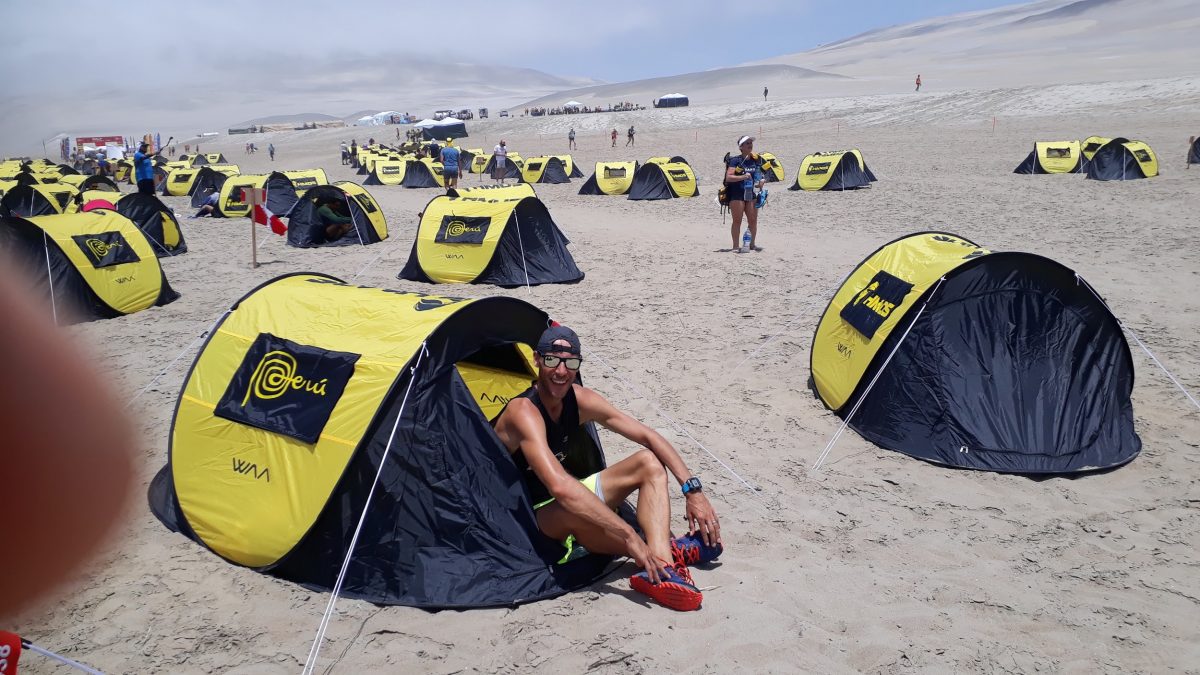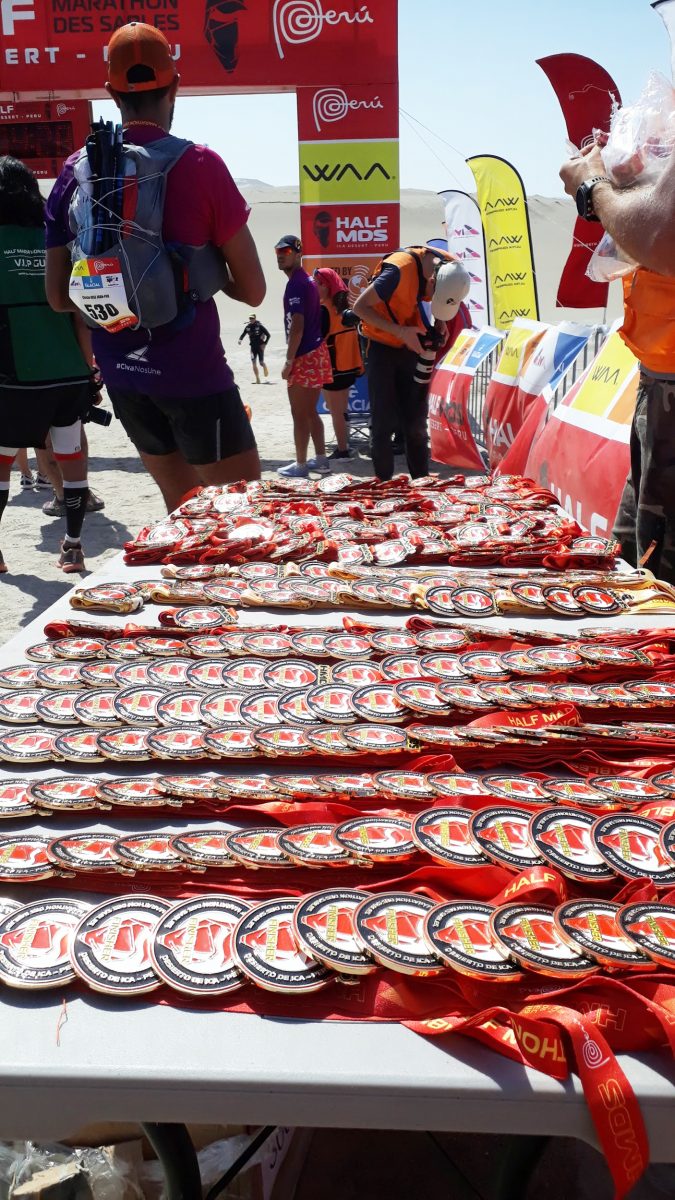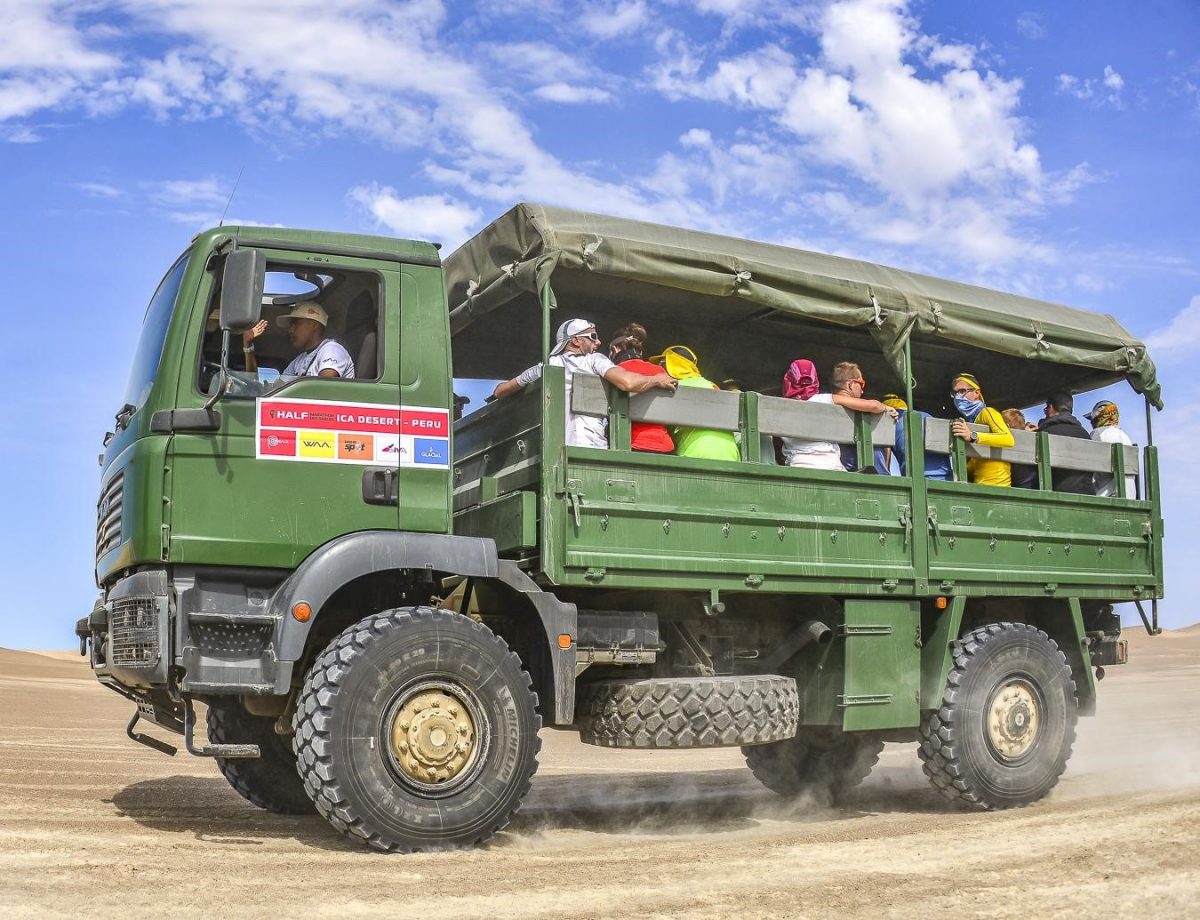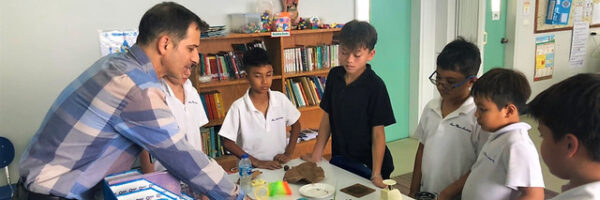
What an adventure
Joining a multi-stage running extravaganza underprepared and overpacked.
Running takes you to places. The local park, a nearby trail, exploring the surroundings of a holiday destination or, in this particular instance, a destination race in the middle of the Ica desert in Peru. Not your everyday destination, the organisers of the HMDS – Half Marathon Des Sables – chose a wild, inhospitable, remote location in one of the harshest environments on the planet to stage a four-day self-sufficient footrace.
“Want to join this race?”, the email in my inbox read early November. “…not really”, a sane person’s reaction would be. I had some lingering endorphins from my latest ultra-marathon in beautiful Nan province in my system and as a result, my brain somehow went: “Yeah sure, why not?”

Jumping into the unknown and embracing the experience is what life is all about, right? I emailed back to the organisers who also organise the famous ultra-event through the Sahara desert (the original Marathon des Sables). I told them I would happily join the ‘little brother’ of the iconic MDS race. “But what exactly am I signing up for?”, I asked.
The reply was a light-hearted email stating that this adventure was: “Just four days of fun in the desert with friends and like-minded spirits”. Sounds like fun. “What about the running bit?’ “As for the race distances, it will be around 120km of sand running (think Phuket beach style but just a little bit longer) and self-sufficiency.” Awesome. Wait, what? “Self-sufficiency?”, what does that mean?
Turns out that being self-sufficient means that you pack everything you need for fours days of survival – all your food – and necessities (sleeping bag, change of clothes, toothbrush) and strap it to your back as you are attempting to navigate the desert sand in the blistering heat. I was about to learn a few new lessons…

Giddy with race excitement, I arrived in Lima, Peru on November 30. Spending a day in Lima is no hardship. Beautiful views, amazing people and a fair share of Inca heritage excavation sites. Overnight, we were bussed to the Ica desert, about seven hours south of Lima. When I woke up, civilisation had disappeared.
“We are here”, the bus driver told us cheerfully. And with ‘here’ he apparently meant smack in the middle of an uninviting landscape that resembles the moon’s surface for as far as the eye could see. There was not a tree, plant or even a blade of grass in sight. Nor were there any manmade structures anywhere.
Disorientated and still somewhat jet-lagged, I stumbled off the bus. Moments later I heard the engine of a Peruvian military transport truck approach from behind one of the infinite sand dunes surrounding us. “This truck will take you to the race start, an orange vest-wearing host told us. An hour of forbidding terrain later, we arrived at what would be our camp for the next four days.
A one-person pop-up tent became home for the next couple of days. It sheltered us from the sun during the day and from the winds during the night. Staged in pods of six tents each, around 500 equally mentally deranged people poured into the campsite, leaving behind all luxury and relying only on what you could carry for the coming days. The comparison with a happy type of mental institution was quickly made by some of my fellow runners.
Participating in the HMDS race was nothing short of amazing and other-worldly! Starting early morning after our first night’s bivouac we set off for 30km plus of ploughing through sand, sand and then a little more sand. On my back rested a backpack that contained enough food to last me a full week if needed.

With this being the very first multi-stage, self-sufficient desert race I was competing in, I had hastily put together my newly purchased gear and brought ample food to sustain me for the duration of the event.
I quickly learned that my calculations regarding the amount of food I was carrying had been far too generous. 4000 calories of food per day sounded like a good number but realistically was too much for me to stomach. Now all of that food was weighing me down as I was trying to scale the biggest sand dune I had seen in my life!
I finished the first day scooping what felt like a decent-sized sandpit worth of sand out of my shoes and vowing to burn a hole in my food storage just to make my second day more bearable. In our small tent group of six, we shared our stories of the day as we munched on our granola, porridge, nuts and freeze-dried instant foods. A steady stream of competitors found their way to the medical services to take care of blisters and other discomforts from the first day.
Day two started early because this was the longest stage of the race. Approximately 55km of stunning scenery and of course more sand awaited us. The highlight of this day was that we would now descend the giant sand dune we scaled the day before. Taking in all the scenery throughout the day, I excitedly leapt over the edge of that dune and let myself fall down that monster for more than a kilometre. An endless descent that brought back childhood memories of smiling ear-to-ear as you raced your sister down the dunes towards the beach.

Finishing day two with that feeling was fantastic! Having a lighter backpack made running a lot more comfortable. I grew more confident in my soft-sand running skills. While most of my fellow runners were struggling with the midday heat, I thanked the Thai weather gods for acclimatising me to this type of heat. Finishing well before sundown meant that I would have more than enough time to get my affairs in order for the next day.
Day three was a rest day. The last competitor had arrived just before midnight of the previous day so many welcomed the opportunity of not having to run on this day. It was a day of socialising and with nowhere to go and no desire to move very much, many conversations were very in-depth and people’s life stories were fascinating.
I spent a long time chatting with my tent pod partner Amy Winters. Amy had to endure all that the other runners had to with the addition of doing it on one leg only. She is an amputee and runs endurance races to show that we are all limitless. Running with her prostatic limb was a real chore as it would dig into the sand with every step. Needless to say that when she arrived back at the camp the day before, the entire group of people present at the time stopped to applaud and salute a fantastic woman and inspiration to us all.
Day four was a short 22km to the finish of the HMDS 2019. With very little weight in the backpack (the food stocks were empty now), running felt effortless again. The terrain on this final day was a lot more bearing sand as well so it made for what felt like a mad dash to the finish line. But being out in the Ica desert for this long does take its toll. Even though this was a short-and-sweet little stage, the final kilometres were still hard as the legs grew heavy from the work in the previous days. After 2 hours, I crossed the finish line for the day and sat down knowing I completed the Half Marathon Des Sables, Peru edition of 2019.

All who crossed that final finish line were relieved to have completed this adventure. Tired and exhausted, we were bussed back to civilisation to be greeted by the staff of the DoubleTree luxury hotel in Paracas where we enjoyed a wonderful evening banquet and the comforts of a normal bed.
The HMDS 2019 was a fantastic adventure and an incredible opportunity to enjoy the vast and endless beauty of the Ica desert. Sharing it with other running adventure enthusiasts was an absolute privilege. On the flight back to Thailand, I caught myself thinking: “I wonder what the real Marathon Des Sables would be like?” …some people just never learn.
Many thanks to the organisers of the HMDS and the sponsor WAA to bring potential brand ambassadors to this event. I am grateful for your generosity and our shared passion for running. Visit https://peru.halfmarathondessables.com/en/half-marathon-des-sables-peru for more information on this race. The 2020 version is accepting early bird applications.



